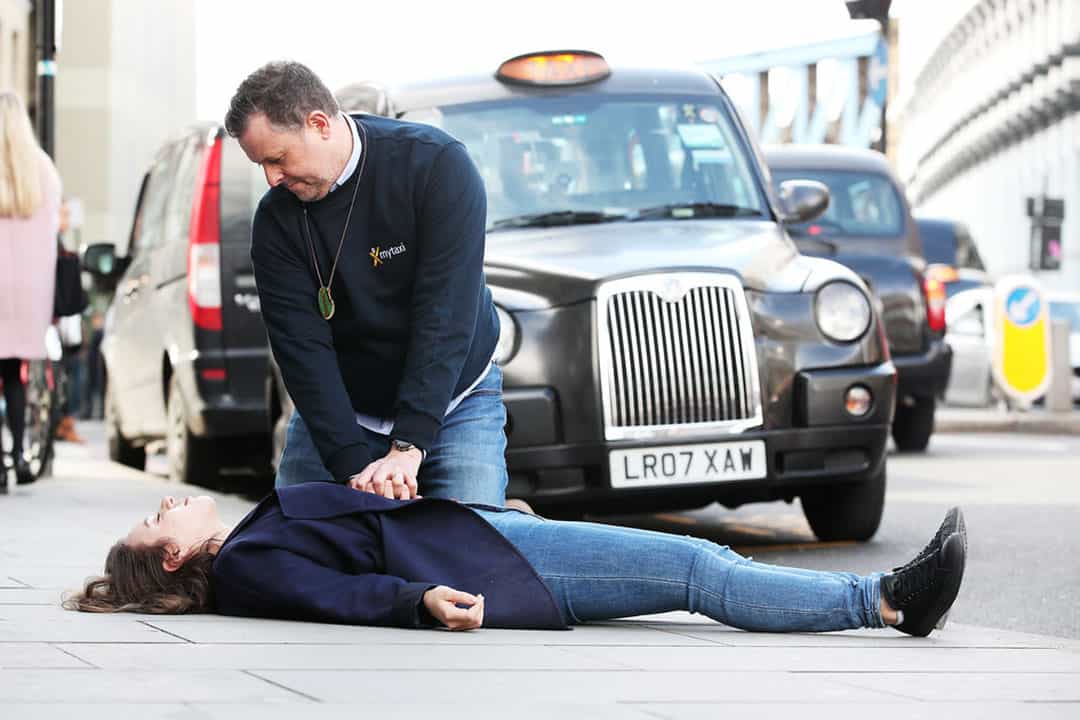Over 400,000 people in North America experience a sudden cardiac arrest outside of a hospital each year. Nearly half of these patients receive cardiopulmonary resuscitation (CPR) from a bystander providing first aid.
Whether a bystander is waving the ambulance down or physically performing CPR, involvement in any capacity can be traumatizing.
However, bystanders, also known as lay-responders in this capacity, are largely ignored by emergency services following the incident. “We call them the forgotten victims,” said Dr. Katie Dainty, a professor at U of T’s Institute of Health Policy, Management and Evaluation, in an interview with The Varsity.
“We’ve been leaving patients behind this whole time.”
Current research shows that lay-responders face a heightened risk of suffering from post-traumatic stress disorder (PTSD), as well as lasting stress, anxiety, and sleeplessness.
A promising approach to provide better care
Dainty co-authored a recent paper with Paul Snobelen, a community resuscitation specialist at Peel Region Paramedic Services, on the implementation of the Lay Responder Support Model in Ontario’s Peel region, approved in 2014. The system’s aim is to screen lay-responders for risk of mental health concerns, and offer them support proactively.
The model has helped address acute stress reactions by lay-responders, and aims to mitigate the risk for lay-responders in experiencing PTSD. The system has three stages.
First, the program’s operators identify and engage with everyone involved in a medical incident — from witnesses to CPR providers. When a cardiac arrest occurs in a public place in Peel region, Snobelen receives information by paramedics involved.
He then collects information and makes initial contact with those involved. “I try to… touch base with everyone involved in the incident, thank them for their response, [and] tell them to note down any questions that come up in the course of the day,” said Snobelen to The Varsity.
In the second stage, the lay-responders are invited to participate in a debrief within a couple days of the event. “Almost every single individual I’ve offered this to has said yes,” he said. “Very few have declined.”
The debriefing allows lay-responders to process the event, ask questions, and discuss their experiences. “I build a timeline with people together. What we do is a more collaborative approach,” said Snobelen.
“This gives an opportunity for everyone to hear [each] other’s involvement and… highlight how everybody’s role was critical to helping that person.”
Another key aspect of the debriefing is answering the lay-responders’ technical questions. Snobelen, recalling a major lesson from the model’s implementation, said that lay-responders often experience cognitive distortion.
These distortions are negative biases in thinking, whereby people convince themselves of untrue beliefs. For example, lay-responders may believe themselves to be responsible for a patient’s death, especially when they break ribs while performing CPR.
He added, “A big element of these debriefings is addressing the cause of cognitive distortions through discussing the technical aspects of CPR performance.”
The final stage of the model is to follow up with lay-responders in three steps. This involves discussing self-care strategies, encouraging them to reach out for non-professional help, and facilitating referrals to professional counsellors if necessary.
The impact of the program
“We have yet to do a longitudinal study, but the initial feedback has been great,” said Dainty. “[The model] is so important because it gives people [a] safe space and is crucial in normalizing their reactions to such a critical incident.”
Reflecting on his experiences with the model, Snobelen recalled interacting with a mall security guard in two separate incidents. The guard went from feeling hesitant about performing CPR to becoming confident in his abilities.
Snobelen has further observed behavioural changes in individuals, before and after attending the debriefing, which has instilled confidence in him about the positive impact of the model.
Potential expansion
However, according to the authors, institutionalizing and implementing the model at a large scale is difficult due to limited resources.
To expand the program outside of Peel region, Snobelen proposed multiple solutions involving different community partners. Extending Ontario paramedics’ peer support teams to the community, he said, could be a potential solution.
He also noted that of lay-responders often reach out to their first-aid instructors with questions. He remarked that the Canadian Red Cross might be able to collaborate in developing a training program, which could train first-aid instructors to facilitate debriefings.
“I’d [also] like to see a [Continuing Education Model] for therapists and counsellors,” Snobelen said, “so they are able to help their clients better in their own practice.”


